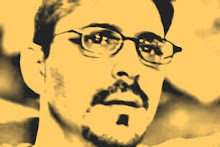Ecopoetics
Here is an interesting article that considers the painting of Jackson Pollock as "Fractal Expressionism." Yes, you read that correctly. Some of the language that Taylor, Micolich, and Jonas use to discuss the work, however, I find a bit confused at times. They write at the end of their discussion, for instance, that Pollock "described Nature directly," yet, "[r]ather than mimicking Nature, he adopted its language -- fractals -- to build his own patterns." In all, their claim that the paintings are indeed fractal paintings is pretty compelling, but I hesitate a bit when they attempt to squarely situate the work within a statistical and ultimately symbolic universe. It is tricky. For if the paintings abandon mimesis--i.e., if they abandon the symbolism of referential systems (and they do)--then the paintings don't really adopt the metaphoricity of language and, thus, don't describe physis with tekhne. Put differently, Pollock isn't interested in the illusion of representing the natural world with artifice, even as self-reflexively, as, say, Wallace Stevens and other like modernists were interested. Pollock's paintings are instances or events of literality: each painting means through itself, rather than through a system of references, of mediation, of infinite relations, and so forth. Yet, I'm still intrigued by the recursive processes that produce the fractal, because it seems that such repetition does not produce the habits of thought that lead, finally, to finality. They are dead ends.


